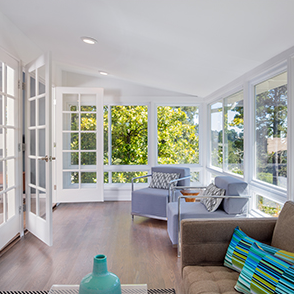
Shopping for a window film may not be the most thrilling thing on your to-do list. There are several things to consider, and with so many options out there: reflective films, tinted films, and frosted designs, it’s easy to get overwhelmed. A perforated window film is a kind of middle ground. It gives privacy without shutting out daylight. However, its effectiveness depends on two key details: pattern and opacity. Here’s why you should consider these elements.
- Pattern Sets the Tone for Your Space
When you think of “pattern,” your mind might go straight to visuals. Dots, grids, waves, or subtle textures. But it’s not just about looks. The pattern on perforated window film affects how much light passes through, how clearly people outside can see in, and how your space feels emotionally.
For instance, a tight, small-dot pattern can give you stronger privacy since there’s less open space for people to peek through. But that also means it can reduce the clarity of your view from inside. On the flip side, a wider pattern lets in more light and gives you a clearer look outside, but it offers less coverage. So it’s really about finding your balance. Ask yourself: what matters more to you? Natural light or privacy?
Patterns also have a big impact on the aesthetics of your windows. If your home or office has a modern look, geometric or grid-like patterns can tie the design together beautifully. For something softer or more subtle, a film with fine perforations can blend almost invisibly into the glass, giving a sleek, minimalist finish.
- Opacity Controls Your Privacy and Lighting
Opacity is one of those things you may not think about until it’s too late. It determines how transparent or solid the film appears once installed. It can make or break your experience. Too opaque, and you might feel boxed in. Too transparent, and you’ll start wondering why you even bothered installing it in the first place.
With perforated window film, opacity isn’t just about visibility, but about how the balance of holes versus material interacts with light. In simple terms, more holes equal less opacity and therefore less privacy, while fewer holes mean more opacity and better privacy. But this also changes with lighting conditions. During the day, when it’s brighter outside, you get more privacy. At night, when your interior lights are on, the situation flips. So you need to think about when you use your space most.
Opacity also affects your energy efficiency. Films with denser coverage can block more heat, which means less reliance on air conditioning. So while you might be thinking purely in terms of privacy or looks, you’re also influencing your comfort and utility bills.
- The Combination of Pattern and Opacity Defines Your View
You can’t really talk about one without the other. Pattern and opacity work hand-in-hand to define your overall window experience. Think of them as the yin and yang of window design. They balance each other. A dense pattern with high opacity might give you maximum privacy but make your windows feel darker and your view fuzzier. A wide pattern with lower opacity might brighten your space but leave you feeling a bit exposed.
Here’s where you need to visualize your day-to-day reality. Are you someone who loves sitting by the window, coffee in hand, soaking in the morning light? Or do you prefer a more enclosed, cozy feel where the world outside is just a soft blur? These small personal preferences should guide your choice.
In offices, for instance, some designers use varying patterns and opacity levels across different sections of a building. The reception might use a lighter pattern to feel welcoming, while private meeting rooms get heavier coverage for discretion. You can apply the same thinking at home. Bedroom windows might benefit from more opacity, while the kitchen could stay lighter to keep things airy.
Summing Up
The right perforated window film needs to balance pattern and opacity. These two elements decide how much light you get, how private your rooms feel, and how your home or office looks from the outside. So take your time. Hold up a few samples against the window, notice how the light plays through them, and imagine your daily routine.